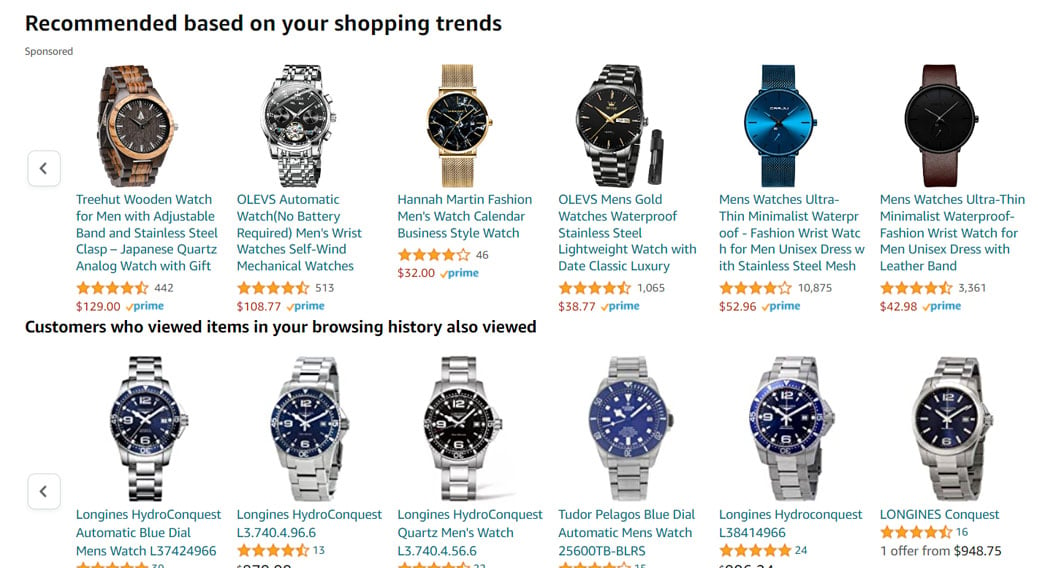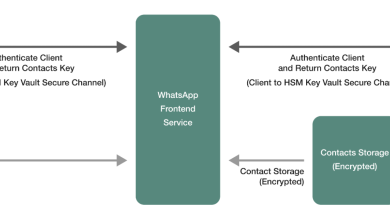Everything You Need To Know About Behavioral Targeting

If you want to effectively reach, keep, and grow your target customers well, you need to employ behavioral targeting in your marketing. Yet, 76% of businesses fail to use behavioral marketing. Those who leverage consumer data in their marketing campaigns outperform their competitors by 85% in sales growth and more than 25% in gross margins.
In the noisy digital marketing universe, it’s no longer enough that you send targeted messages based on your contacts’ demographics or interests. You also need to tailor your messages based on how they interact with your business and their stage in their customer journey.
Behavioral targeting is widely used in email marketing as behavioral retargeting. For instance, you can convert a site visitor who has added an item to a shopping cart but did not complete the buying process by sending them a customized abandoned cart email to nudge them to complete it. You can do this with a friendly reminder of how you saved their choices and offer them a time-sensitive discount to buy it right now.
A good, pre-vetted email marketer can help you with this, but it’s best to know what behavioral targeting is and what it entails so you can collaborate with your marketing freelancer better.
What is Behavioral Targeting?
Behavioral targeting is a robust personalized marketing method of gathering data on your target market’s consumer behavior to segment, match, and serve their specific intents, interests, and needs well by delivering them the solutions your business offers.
Also known as online behavioral advertising (OBA), online behavioral targeting, and behavioral targeting marketing, behavioral targeting involves segmenting audiences based on their behavior, intentions, geolocation, and other metrics using cookies, search history, web analytics, and other insights.
By finely segmenting them in this manner, you can provide more relevant content and offers, instead of sending a general message to all audiences which can put off some people who would find your general message irrelevant.
There are two (2) types of behavioral targeting: on-site and network.
On-site behavioral targeting
This involves placing on-site behavioral ads with tracking pixels on a specific website, allowing brands to discover users’ interests and offer them their best solutions. This type of ad also helps personalize and enhance user experience on the site.
Often used on home pages or product categories, these ads with tracking pixels collect information about user behavior, activities on the site, and other relevant attributes so brands can provide users with relevant offers to take the next step in their customer journeys, moving prospects into deeper engagement with their site.
Tracking pixels are very tiny 1×1-pixel graphics, usually hidden and embedded in everything from emails to banner ads. They track user behavior, site conversions, web traffic, and other metrics at a site’s server level.
Behavioral targeting sub-types that fall into this category are app engagement, email campaign engagement, and website engagement.
Network behavioral targeting
This involves collecting cookies (text files with small pieces of data to identify your computer) and Internet Protocol (IP) information, but never personal data like names, emails, and numbers. Algorithms then process data about users’ interests and purchase intentions. Users are then divided into segments and shown more personalized ads. A behavioral targeting sub-type that falls under this category is collecting data on users’ purchase behavior across different e-commerce sites.
Behavioral Targeting Pros and Cons
Behavioral targeting is a powerful marketing tool that can provide significant value to both brands/marketers/advertisers and consumers.
Benefits for Brands

For brands/marketers/advertisers, behavioral targeting helps them nurture leads through the customer journey, create relevant advertisements that match consumer needs, enhance their site user engagement, make more sales, and improve their returns on investment (ROI).
Understanding customer behavior and habits helps businesses and advertisers identify individuals that are engaged with a specific area of interest or type of product, which then can be used to improve engagement. Through improved engagement, they can also identify audiences at a particular moment in the buying process, which provides businesses the opportunity to further engage them by offering their products and services to them.
Through personalized messaging, businesses can increase conversion rates and reduce their advertising budgets. Relevant ad content is significantly more effective than general ads in moving prospects along the sales funnel.
According to a Verve Mobile study, geo-targeted mobile ads performed 50% better than non-targeted campaigns. Another study by Microsoft Research Asia showed how user segmentation for ad delivery can improve click-through-rates (CTRs) by 670%. A Marketo study shows a 56.68% increase in open rate and 147% increase in CTRs when using what it calls “interest-based marketing” for behavioral targeting.
With better-nurtured leads, relevant advertising, and improved user engagement, the chances for making more sales and improving ROI are higher than with traditional advertising.
Challenges for Brands
Behavioral targeting can get costly, especially in running pay-per-click ads.
Also, if you don’t know your audience well and you identify wrong segment characteristics, or you don’t communicate to them well in your content, behavioral targeting doesn’t guarantee positive results. Behavioral targeting helps you find the right customers based on the segment characteristics you identify, but it’s still up to your ad to close the deal.
Behavioral targeting can also lead to advertising overload, inundating your target customers who will eventually resist further engagement with your ads.
Benefits for Consumers
For consumers, behavioral targeting helps them enjoy improved site user experience, faster search with more relevant results, and better product awareness.
Through personalization in behavioral targeting, website users are able to view advertisements based on their interests, which contributes to improved user experience.
Personalized advertisements can also act as a shortcut for purchases when users are searching for the best product to buy in a specific area of interest. Instead of looking for the product through a tedious search process, the product itself finds the customer. This saves potential customers time by helping them find the relevant products faster.
Potential customers are able to stay updated as personalized advertisements ensure this. With retargeting based on consumer behavior, potential customers, who viewed a particular product before but left the page and didn’t buy it, will be shown the same and other similar products the next time they go online.
Ethical Challenges for Brands and Consumers

Still, there is an ethical debate around behavioral targeting concerning violations of people’s privacy and their personal data security. Although behavioral targeting is a powerful tool for good, it can also be a powerful tool for dark activities.
In the United States, there is no single data protection legislation but a collection of hundreds of laws enacted at the federal and state levels to protect the personal data of its residents. At the federal level, the Federal Trade Commission Act of 1914 broadly empowers the FTC to enforce actions to protect consumers against unfair or deceptive practices and to enforce federal privacy and data protection regulations.
The Federal Trade Commission (FTC) has been involved in the oversight of online behavioral advertising (OBA) since the mid-1990s. It generally recommends industry self-regulation and securing users’ personal consent to tracking.
In the European Union, the General Data Protection Regulation (GPDR) took effect on May 25, 2018. It aims to safeguard personal data, return control of personal data back to subjects in the union, and make the regulatory environment simpler for businesses. The ePrivacy directive, expected to take effect after 2022, focuses on respect for private life especially when using electronic communications. GPDR covers rights and regulations in the context of data protection while ePrivacy covers rights and regulations in the context of user privacy.
To date, 71% of countries in the world have data privacy laws to address this challenge, while 9% have draft legislation, 15% have no legislation, and 5% have no data on the matter. Africa has 61% and Asia has 57% adoption of legislation. The share in the least developed countries with legislation is only 48%.
Much still needs to be done, not only in terms of legislation but also in terms of enforcement, and both brands/marketers/advertisers and consumers taking conscious responsibility and accountability for their roles in it. Consumer behavior data, when collected appropriately and used responsibly, can help meet consumer needs at the individual level.
For brands/marketers/advertisers, ClearCode recommends the use of GDPR-safe contextual targeting for marketing to EU consumers. Still, for the rest of the world, behavioral targeting is allowed within certain legal parameters. Online marketing industry players like Google and Facebook continue to use behavioral targeting.
Behavioral Targeting vs. Contextual Targeting
Behavioral targeting differs from contextual targeting mainly in the ad-serving method used.
Behavioral targeting delivers ads based on the user’s historical browsing data to increase personalization, while contextual targeting selects contextually relevant content to serve ads to. For example, when a cookware ad is placed on a recipe site, or a hotel ad in a travel site, these are contextual targeting.
Behavioral targeting leverages cookies and users’ historical browsing data, while contextual targeting doesn’t use or collect cookies but uses context in users’ search journey to show the right ads.
With behavioral targeting, two (2) people can see very different ads while viewing the same webpage simultaneously. With contextual targeting, they will see the same ads.
The recommended marketing practice is to use both behavioral targeting and contextual targeting based on the customer journey concept as it prepares you to capture conversions at multiple points along the journey.
Successful Behavioral Targeting Examples
Here are three (3) success stories of brands that used behavioral targeting in terms of:
Location-based advertising

This is when you adapt your marketing message based on where your target customers are geographically, their proximity to stores carrying your products, the weather, transport routes, and other local factors.
Neutrogena, to advertise on Facebook its new Beach Defense sunscreen during sunny days, used real-time UV conditions, the time of day, and the proximity to shops selling the new product to target potential customers, instead of just limiting itself to weather forecast apps. It used these factors to create dynamically created ad units.
Neutrogena described its target audience as “proactive everyday protectors” who are women 25 to 54 years old, very aware of the damage the sun can cause but still enjoy spending time in the sun with their children. They are very careful to protect themselves and their families regularly to ensure that they are safe from the dangers of sun-caused damage.
Neutrogena ads used tracking pixels with real-time triggers to only target audiences when the sun was shining. Their mobile campaign “followed the sun” across beauty of lifestyle content popular with their target audience. Consumers were encouraged to purchase via maps and coupons were personalized to them.
The result? Product awareness increased from zero to 63% and purchase intent rose to 43%.
Cross-selling

Amazon widely practices this. Cross-selling is when a brand encourages customers to purchase products or services in addition to the original items they intended to buy.
When you shop at Amazon, every time you add an item to your shopping cart, Amazon recommends other products which are usually complementary ones, based on your unique customer data. It also uses features on its product pages “Customers who bought this item also bought…” and wish lists, which makes the cross-sell experience feel organic and value-adding and less in-your-face selling. These personalized product recommendations maintain high-level accuracy to keep customers satisfied and avoid cart abandonment.
Amazon’s CEO Jeff Bezos, usually mum about their company data, revealed that as early as 2006, when Amazon was just a bit more than a decade old, 35% of its sales were already a direct result of cross-sells.
Behavioral email marketing

This involves the use of behaviorally targeted email campaigns which are triggered by user actions taken on a brand’s website such as subscribing to a newsletter, viewing a sales page, or adding an item to a cart.
Closet London, the clothing brand for women, first splits its customer base into five (5) groups based on their past purchases, then implements email marketing workflows to each group. These groups are:
- One-time purchasers;
- Repeat purchasers;
- Loyal customers;
- At-risk; and
- Dormant customers.
At-risk and dormant customers are sent an email about the latest collection. If no conversion takes place in two (2) weeks, Closet London encourages them to re-engage by emailing them a 15% discount offer.
Closet London also sends other email campaigns tailored to new users with a welcome email campaign. The first email offers a 10% off code, the second introduces Closet London’s social channels, and the third showcases signature styles, followed by a reminder if the recipients haven’t converted yet.
These campaigns resulted in conversion rates 35 times higher than a previous version of their welcome email campaign, and a 2900% email-based revenue increase. According to their e-commerce executive, Lucy Fernandez, for their customer base, personalized email content has become synonymous with having a personal stylist, which keeps them coming back for more.
How Does Behavioral Targeting Work?
The behavioral targeting process essentially involves four (4) phases:
1. Collect and analyze user data

Adobe Audience Manager, a top Data Management Platform
Data is collected from multiple sources using tools such as integrated tracking pixels, third-party cookies, customer profiles registered within the company’s system, users’ purchase data, and internet service providers (ISPs) that can perform deep packet inspection.
You can buy ad-serving behavioral data from third-party companies like Nielsen and Oracle, or you can use a Data Management Platform (DMP).
A Data Management Platform (DMP) is a technology platform that can do all these by collecting first-, second-, and third-party data.
First-party data are information gathered from the users or customers themselves through subscriptions and newsletter signups, web and mobile analytics tools, Customer Relationship Management (CRM) systems, and transactional systems.
Second-party data are information initially collected in the form of first-party data and then passed on to another company through partnership agreements, such as audience information and ad-serving data.
Third-party data are information collected from a range of different sources and sold to companies to be used for audience targeting and analysis.
DMPs are central hubs that store and analyze a company’s audience, customer, and marketing data, and make use of these huge data to analyze and present them in easily digestible ways. DMPs are usually used by ad agencies, marketers, and site publishers.
Essentially, DMPs benefit those who:
- Manage online advertising campaigns;
- Want to learn more about their existing users and customers;
- Want to connect offline with online data to create a Single Customer View (SCV);
- Want to personalize messages and content;
- Want to increase conversion rates;
- Want to lower advertising costs and improve campaign ROIs; and
- Want to connect offline with online data to create a Single Customer View (SCV).
2. Segment users

After the data is collected, site users are divided into different segments based on their behavior characteristics.
For example, site visitors can be one segment, new customers another segment, and people who buy the same product frequently a third segment.
Based on the brand’s marketing goals, site users can be segmented demographically, psychographically, geographically, based on occasions that prompt them to interact with certain products, loyalty programs, and/or through the customer journey using the AIDA (Awareness, Interest, Desire, and Action) model.
3. Apply collected data in creating personalized marketing campaigns
Using the collected data and segmented target audience data, create and implement personalized ad campaigns to match specific user segments. This makes the advertising more relevant for those specific groups of users and increases the chances for engagement and conversions.
4. Track campaigns
Advertisers measure and analyze their campaigns using tools such as analytics to finetune and ensure that their campaign is on track and actually working.
There are six steps to tracking campaigns:
- Identify the key metrics based on your campaign goals.
- Choose the tools you’ll need based on your chosen metrics. If you want to gather quantitative data, you can begin with a web analytics tool like Google Analytics. If you want more in-depth data and insights using qualitative data, you can use top campaign management tools like Adobe Campaign, Salesforce, and Hubspot.
- Implement the monitoring tool you selected. In choosing the monitoring tool, pay attention to features such as: advanced search filters, free trial available, ready-made reports, real-time alerts, tracking in any language or country, and an unlimited number of users to begin with.
- Set up notifications about things happening around your brand.
- Create the reports in visualized forms for faster analysis.
- Analyze the data, and test and optimize the campaign.
Types of User Information Collected For Behavioral Targeting
Generally, information connected to users’ online behavior that is collected for behavioral targeting includes:
- Ads, content, and buttons clicked;
- Amount of time spent on a website;
- Content read;
- Demographics;
- Interaction with elements on the website;
- IP address and geolocation;
- Last date of website visit;
- Pages or products viewed;
- Previous search terms;
- Previous purchases;
- Searches within the website;
- Sections of a page regularly visited by a user;
- User login information for registered users;
- Websites visited; and
- Other information on users’ interactions with the website
How To Organize Your Audience For Behavioral Targeting
To effectively personalize your marketing messages and campaigns, you need to organize your audience into segments based on shared traits or behaviors, so that people receive the messages that really matter to them. Segmentation ultimately aims to increase sales volumes while providing users and consumers with a satisfying shopping experience.
When you organize your audience, zero in on the customer behaviors that matter to your business. Once you have identified these specific customer behaviors, use them to trigger automations for your campaigns.
For example, if engagement is a priority customer behavior for your business, you can automatically set a reminder for users to log into your app after a specified number of days of inactivity. You can do this with a Customer Relationship Management (CRM) software.
Going beyond segmenting for the usual consumer data (age, location, sex), behavioral segmentation microscales consumer groups based on their needs and online actions so that their problems can be solved more efficiently. Behavioral segmentation usually begins with the following categories but are not limited to these alone:
- Benefits sought
- Engagement level
- Geolocation
- Occasion
- Transactional data
- Visit data
Moving Forward With Behavioral Targeting
Behavioral targeting lets your content be seen by the right audiences. With this, you are able to nurture high-quality leads and engagement, which in turn leads to better conversions and returns.
You need to be mindful, though, of not violating ethical boundaries on users’ privacy and personal data security. Depending on the country you are showing your ads to, there are often data privacy and related laws that define these boundaries. To ensure non-violation of these regulations in countries where there are stricter parameters, the use of contextual targeting is advised.
Generally, using both behavioral targeting and contextual targeting is recommended to capture conversion at multiple points along online users’ customer journeys.
Professional, industry-tested, and pre-vetted marketers can help you employ effective behavioral targeting in your marketing to successfully achieve your business goals. Get started here now.



